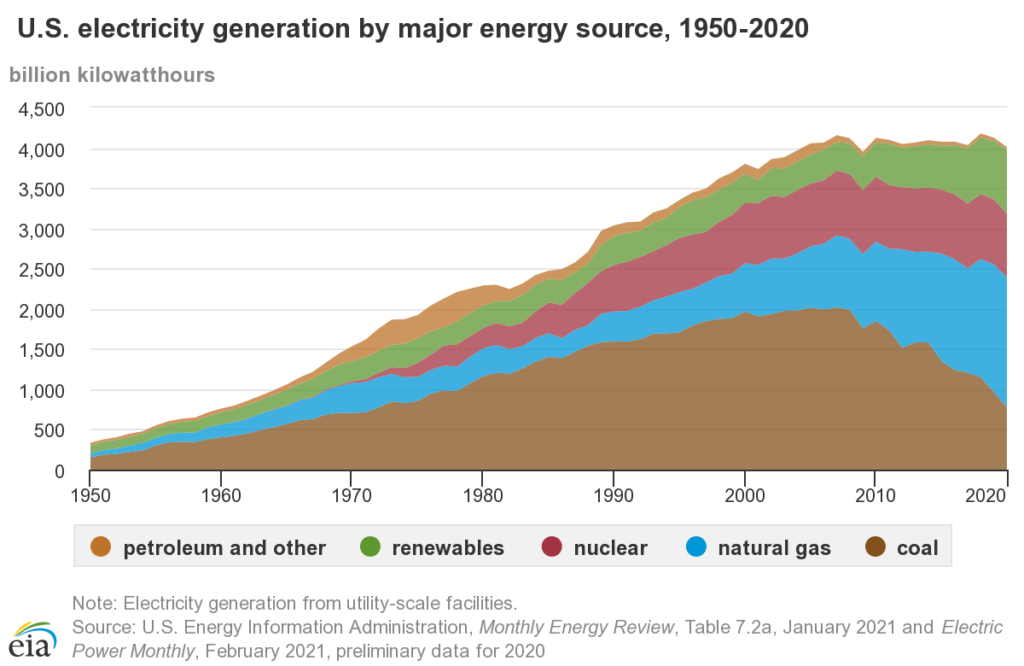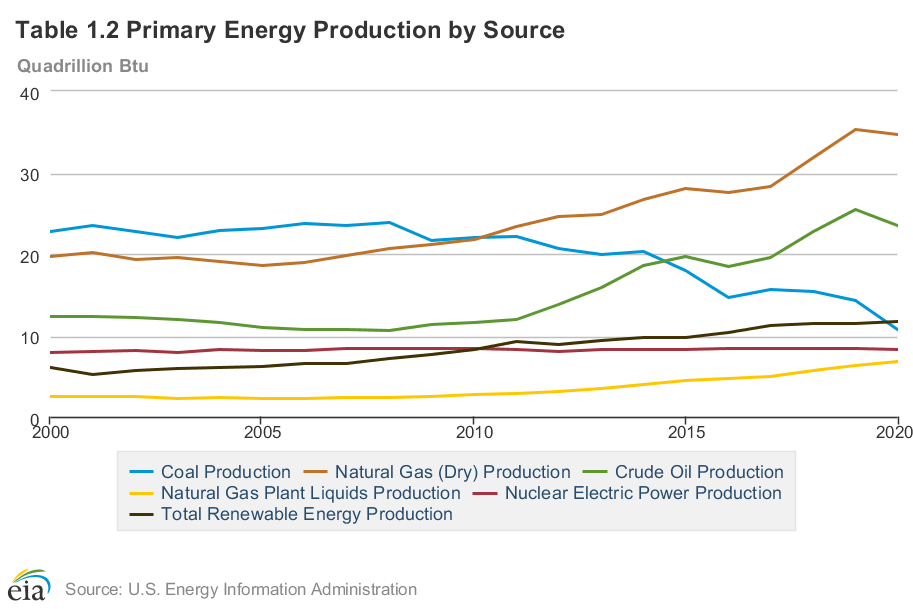Coal and generated electricity have had a long-standing relationship, reaching back all the way to the first plant in New York in the 1880’s. It has been the single largest source of energy generation for the vast majority of that time, but for the last two decades has been ceding ground to alternative generating methods that want to compete for the elusive top spot. Switching to seasonal operation may be how these coal plants stay competitive in the future.
In today’s world, coal is clearly no longer king, and the operators of America’s coal-fired plants have begun to consider new operating models to reduce costs and ensure that they can remain profitable.
Between 2011 and 2019, 121 coal fired power plants in the U.S. were repurposed and retrofitted to use a different fuel source to generate electricity. By 2025, the U.S. coal fleet is projected to generate less than 200 GW, a 1/3 reduction from its peak in 2011.
In 2020, another milestone was attained by coal’s competitors; total production (And consumption) of energy produced by coal was overtaken by energy produced from renewable sources for the first time.
What Are Coal Plant Operators Doing In Response?
In light of the decline for the demand of coal, paired with the ever-increasing incentives for renewable sources and clean energy regulations backed by the government, some coal plants are trying something different: seasonal operation.
For these plants, the revenue generated from normal operation is not enough to cover their operating expenses, forcing them to run at a deficit for most of the year. The data shows that seasonal operation, however, would be a viable alternative to cut costs during lean times and increase profits when demand is at its highest.
In recent years during off-peak times (Typically spring and autumn), the average capacity factor for coal plants across the US has been less than 50%. In April and May 2020, for example, the US coal fleet operated under 30% of time.
During times of high demand (Typically summer and winter), these coal operators plan to continue normal operation. The caveat is that they will then shutdown completely for the remainder of the year. This will not only save operators and customers money in the long run, but will also reduce carbon emissions. Especially during periods of the year when other resources, such as wind and solar, are available at a lower cost.
2 coal plants in Minnesota are some of the most recent to make the switch to seasonal operation and expect to save customers up to $3.5 million by 2023. In the same timeframe, it is estimated that this operational change will reduce greenhouse gas emission by 7.3 million tons.
How Can RateAcuity Help You?
The field of energy generation is an ever-changing landscape and can be difficult to navigate. It is yet to be seen what long term effects this change will have on the sector and how sustainable this model of operation will be. Rest assured though, RateAcuity’s up-to-date database accurately reflects all the changes that impact the final rate you pay for electric service as they happen.
Our API can be integrated into your existing system and save you hours of researching tariff documents to find that one specific electric schedule you need. Our web portal can be accessed anywhere and provides you with reports on electric data across the entirety of the US and Canada, in an easily readable format displaying the data you care about most. Contact us today to see how we can help you save money and meet your business needs.
Start Your 14-Day Free Trial Call Us: 843-879-5031

